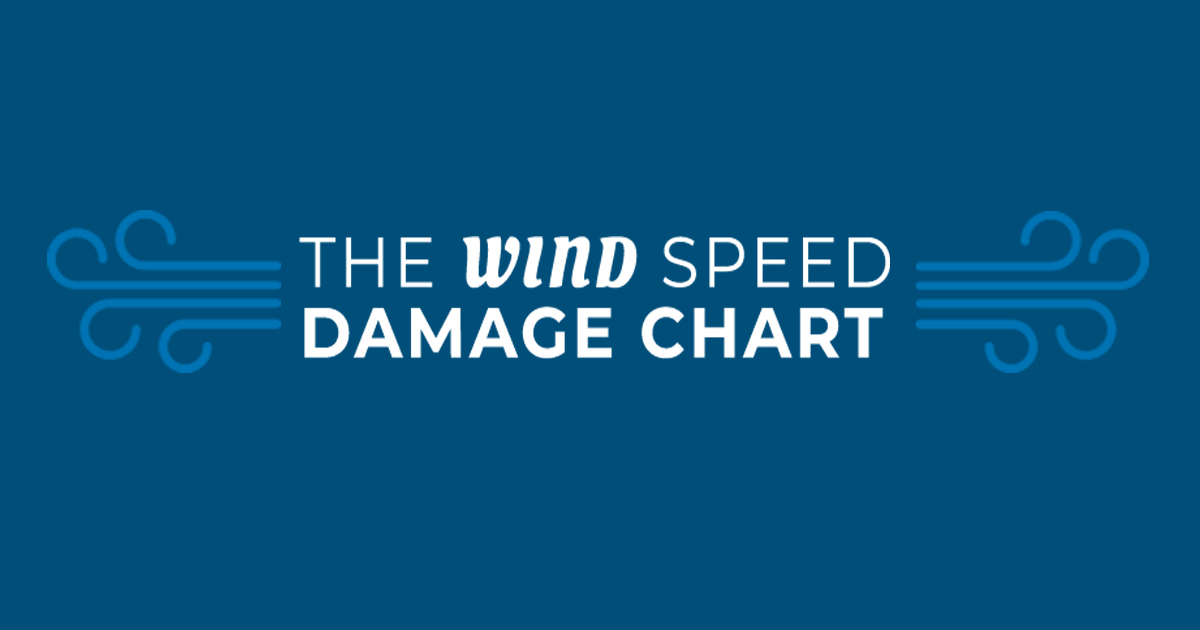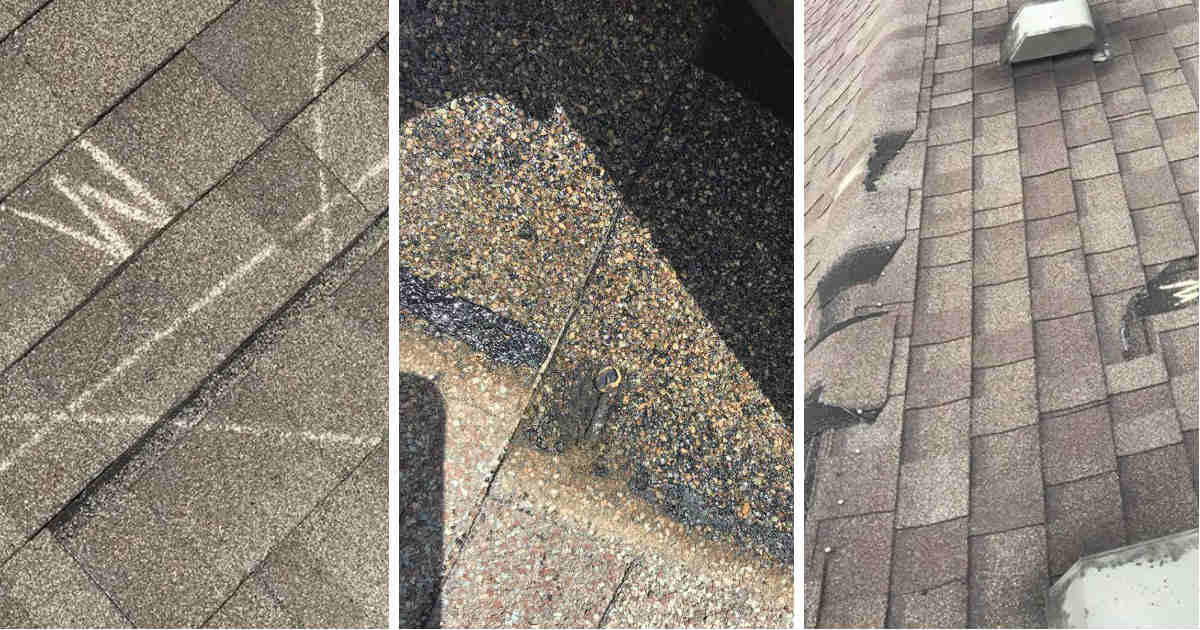
How to Tell if High Winds Damaged Your Roof
It’s not something you’re likely to think about, nor see as you pull up to your house; it’s roof damage. After a week of storms, we’re usually happy to see the clouds part and the sun shine through. But remember that those storms could have caused significant damage to your roof - from either hail or high winds. The roof may have bang-ups, loose shingles and/or spots of missing asphalt. If the roof is old or you suspect it’s got some issues - give us a call. We’re the experts and we’ll be looking for all the possible signs of damage that an insurance company would require to cover the cost of a new roof.
Wind Can Cause Damage to Your Home
Homeowners are often surprised to hear that wind can cause damage to their homes. High winds can cause hazards to your property and surrounding areas - hazards such as fallen branches, uprooted trees and torn down power lines. While these dangers are what we picture after a big storm, the wind itself can also result in structural damage to your home. When high winds hit a roof, shingles can loosen or fall off. If wind speeds are very high, even new, secure shingles can tear away. Other wind damage to a roof includes damage caused by falling objects and debris such as tree branches and downed powerlines.
Wind Damaged Roofs
Roofs are very susceptible to wind damage, in part because high winds do not hit roofs uniformly. Rather, wind tends to cause damage to the edges of the roof, or areas of the roof that are already loose. These loose parts of the roof are easy targets because winds can more easily rip up loose shingles, causing a chain reaction. Roofs are commonly damaged by falling objects and debris as well. Eventually, after prolonged wind damage, your roof can start to leak or rot due to water exposure.
What is the best roof for high winds?
If you want the best roof for high winds, the decking under the shingles needs to be strong and sturdy, and your fastners should be high-quality. Craftsmanship is also important. Some metal roofing can withstand wind speeds of more than 150 mph.
Wind Speed Damage
So what wind speeds do you need to be worried about?

45 - 57 mph
According to the National Weather Service, slight damage can begin when winds reach 45 mph, but this range is considered “non-severe”. These non-severe winds may cause some tree branches to break off and can cause damage to already loose or susceptible shingles.
58 - 74 mph
This is when winds turn severe and cause significant damage to landscaping and structures. At this range, wind will take down whole tree limbs, begin to uproot trees, rip off shingles that were in good condition and cause issues with chimneys.
75+ mph
At this speed, wind will cause widespread damage to trees, flip mobile homes and cause significant roof damage to commercial buildings and homes.
Identifying Wind Damage to Your Roof
If you’ve recently experienced winds of 45 mph or higher, then call us and we will get outside and take a look at your roof for some of the common signs of roof damage. Signs of wind damage on a roof include loose or missing shingles, chimney issues, curling or peeling shingles, granule loss, damaged soffit or fascia and indoor leaks. High winds can also cause tree branches to fall and damage a roof.

Spots of Granules Missing from your Shingles
Like hail, wind can cause loss of granules (the sandpaper-like part of the shingle). The first place we look to determine if you have missing granules is by inspecting your gutters for the granules, as this is where they tend to pile up.
Edge of Roof Curling from Peeling Shingles
The edges and other pressure points on the roof are most likely to sustain damage from wind. During our inspection we’ll look for curling shingles where the wind took hold and began to peel the shingles. Shingles keep out water, so if they’re loose it will lead to water damage and a quickly deteriorating roof.
Entire Shingles Missing from the Roof
One of the easiest ways to tell that you have a wind damaged roof is the loss of entire shingles. If you find shingles in your yard or around your house, you’ll definitely want to have a professional come out and look at what else could cause you trouble. Strong winds can completely rip shingles off leaving your roof vulnerable.
Cracks or Tears in a Flat, Rubber Roof
If you have a flat roof, we’ll look for missing pieces or tears in the material. Wind can lift up the material and rip it away or leave it with bubbles which hurts the integrity of the covering.
Damaged Soffit or Fascia
Like shingles, soffit and fascia keep water away from the roof, reducing the chances of getting a leak. When damaged, soffit and fascia can open your home up to water damage and stray critters snaking in. Wind can cause cracks, loose or bent areas or even blow off loose fascia entirely.
Chimneys
Is your chimney looking a little crooked? This should tip you off to a problem. Sometimes we find missing spots of lashing, which breaks the sealing around the chimney and lets in water.
Leaks and indoor signs of roof damage
It might seem counterintuitive to go inside your home to look for roof damage, but the signs might be written on the walls. If you see discoloration, wet spots or peeling paint, there’s a good chance your roof is leaking. We’ve got an entire article focused solely on what can happen if you ignore storm damage.
How to Repair a Wind Damaged Roof
Roof damage caused by wind can absolutely be repaired. The scope of the repair will depend on the damage, ranging from shingle replacement all the way to a new roof. If you notice damage to your roof, schedule a property evaluation right away, because damage will only worsen the longer your roof and home are exposed.
After we assess your property and use our cutting edge drones to identify damage, we’ll sit down with you to discuss the level of damage. Our roof inspections are free!
Is Wind Damage Covered By Insurance? Filing an Insurance Claim for Roof Damage Caused by Wind
We often hear people ask if roof damage was caused by wind or some other weather-related factor, which a homeowner may believe is covered by their insurance.
If you are asking that type of question, we recommend that you first call the Des Moines roofing contractors Superstorm Restoration for your free drone roof inspection. If you are dealing with roof damage caused by wind, you may be able to submit a homeowners insurance claim. Check your homeowners insurance policy to find out if wind damage is covered by insurance. At Superstorm Restoration, our storm damage repair team will educate you on the cause of your roof damage, necessary repairs, and cost thereof, so you have the information you need in the event you choose to file a claim with your insurer. We will ensure that nothing is missed in term of the necessary repairs to your roof.
Time for Your Free Drone Inspection
If you’re worried that your roof, softs or fascia were damaged by high winds, call Superstorm Restoration for a free property and drone evaluation. Our team of experts will assess the damage and help you decide what to do next!
Previous version:
